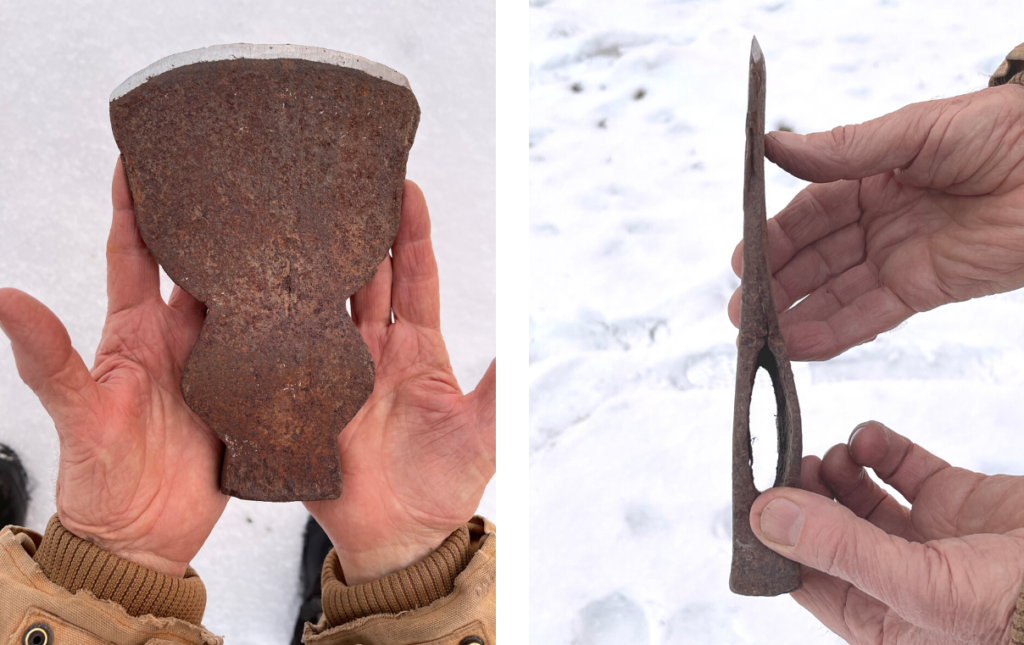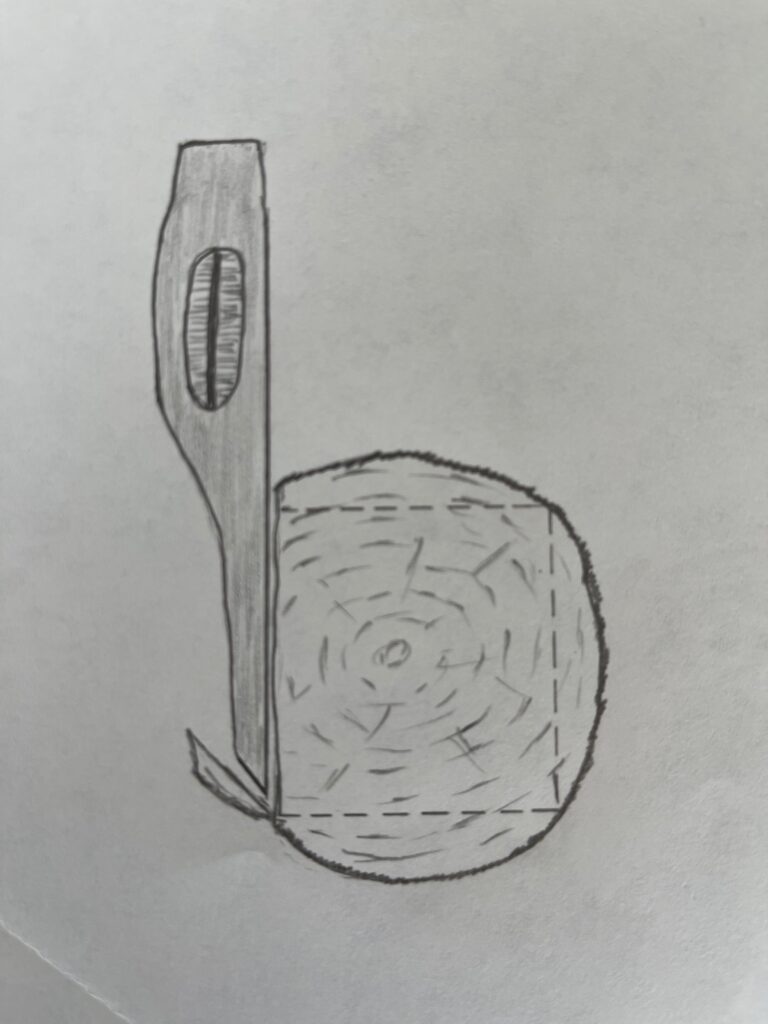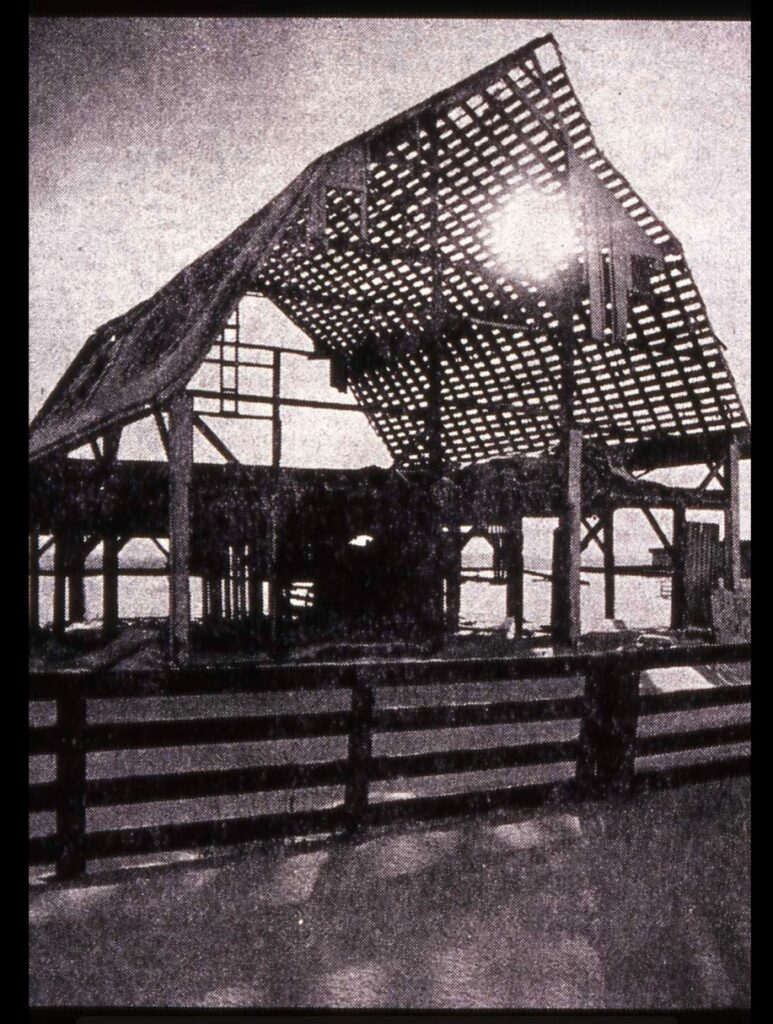Woodlot Surprise: A Broadaxe
When we moved into our rural homestead in 1977, there was a misshapen oak tree growing through a wire fence. Previous owners had cut the tree off at least several times above the upper strand of barbed wire. I had already removed most of this fence, but left short pieces of wire sticking out of the tree trunk to remind me where not to go with the chainsaw. The stump had regrown new sprouts, and in 1977, one of these was a trunk about a foot in diameter leaning out over our lane and destined to fall in some future storm. So I decided to be proactive and remove it.
I started cutting safely above the top wire which was sticking out on each side, but quickly felt the ping of steel-on-steel, which was not good. I retreated to gather a chisel and mallet, and soon learned that there was a piece of rusty steel inside the tree. More chiseling indicated its approximate dimensions. Since I had already damaged my chain, I cut out a chunk of log with its steel burden.
Later I used the log-splitter to peel apart the log in thin slices and it released the head of a broadaxe, which I at first thought was poorly made because one side was completely flat with all the taper needed to give it a wedge shape on the other side. If you chopped trees down with it regularly, it would twist the handle a bit with each strike and gradually give you sore wrists.

The broadaxe head, left. I ground the rust off the cutting edge and it is good steel. When I cleaned the rust off the cutting edge, right, I kept the original angle. Note that it is only sharpened on one side, like a chisel. Photos by Kate Sulentic.
But I already had respect for the old ways and knew that tools made by hand labor for use by hand labor were very purposefully made. Rust had etched the welded edges and it was clear that this axe had originally been cut out of a single sheet of steel. It had then been folded over like a taco shell and the halves welded together to become the blade. This is impact welding where the red hot and soft metal is pounded together by the blacksmith at his forge until the two layers merge and become one. On the backside, the poll is formed by putting an extra piece of steel inside the fold of the taco and welding it there. The handle hole was kept open around a cool metal form rod and not welded.
Eric Sloane, in his sketchbook “A Museum of Early American Tools”, provided the answer regarding why the blacksmith made it with one flat side. The purpose of the broadaxe was to take round logs and trim them down into square house and barn timbers or flat railroad ties, and the flat side of the axe was worked along the flat side of the timber.*
And what is the context of our woodlot specimen? Functionally, this type of axe was replaced by sawmills, which could also cut square timbers. In 1973, I dismantled an old barn near Hills, Iowa, and the lumber became incorporated into our house I was building. This barn was built during our uncivil war and the timbers, rafters, purlins and siding had all been cut at a sawmill, as evidenced by the curving saw blade marks on the wood. Other local barns I observed from that era were also made of sawn wood rather than broadaxed, so I think that only the earliest settlers in eastern Iowa, vintage 1830s-1840s, used lumber squared with a broadaxe. Iowa also had only minor amount of iron ore in a few northeast counties, so this axe was probably not made here, although Sloane shows that the design is American, not British or German.
So overall it is perhaps more likely that the woodlot axe was already an old tool when some early farm family brought it with them from back east, but it never got much use here for squaring timber and just became a more general purpose axe for clearing brush, cutting branches and splitting firewood. And finally became forgotten one day in the woodlot after someone had chunked it into a fork in the fencerow oak.
*For more details regarding how different types of axes were used, see Sloane pages 14-21.




